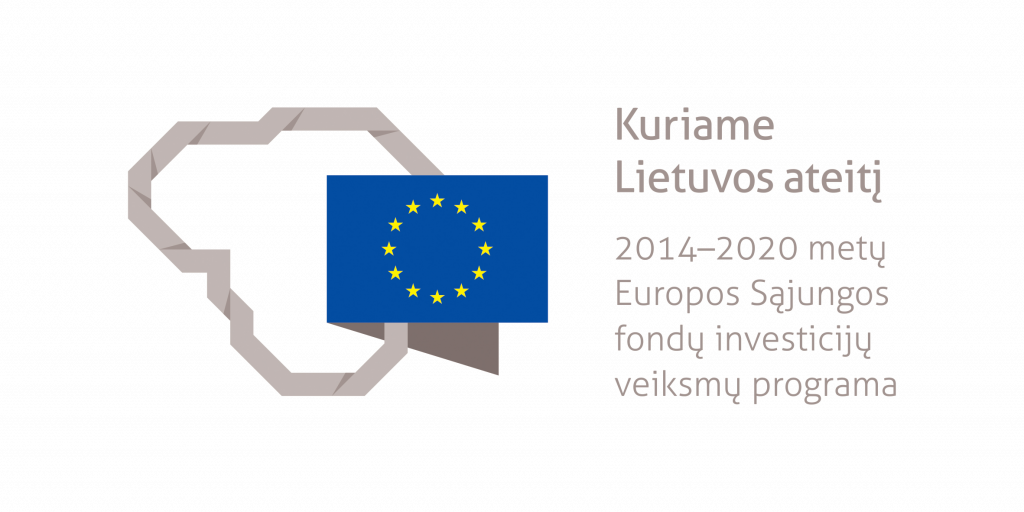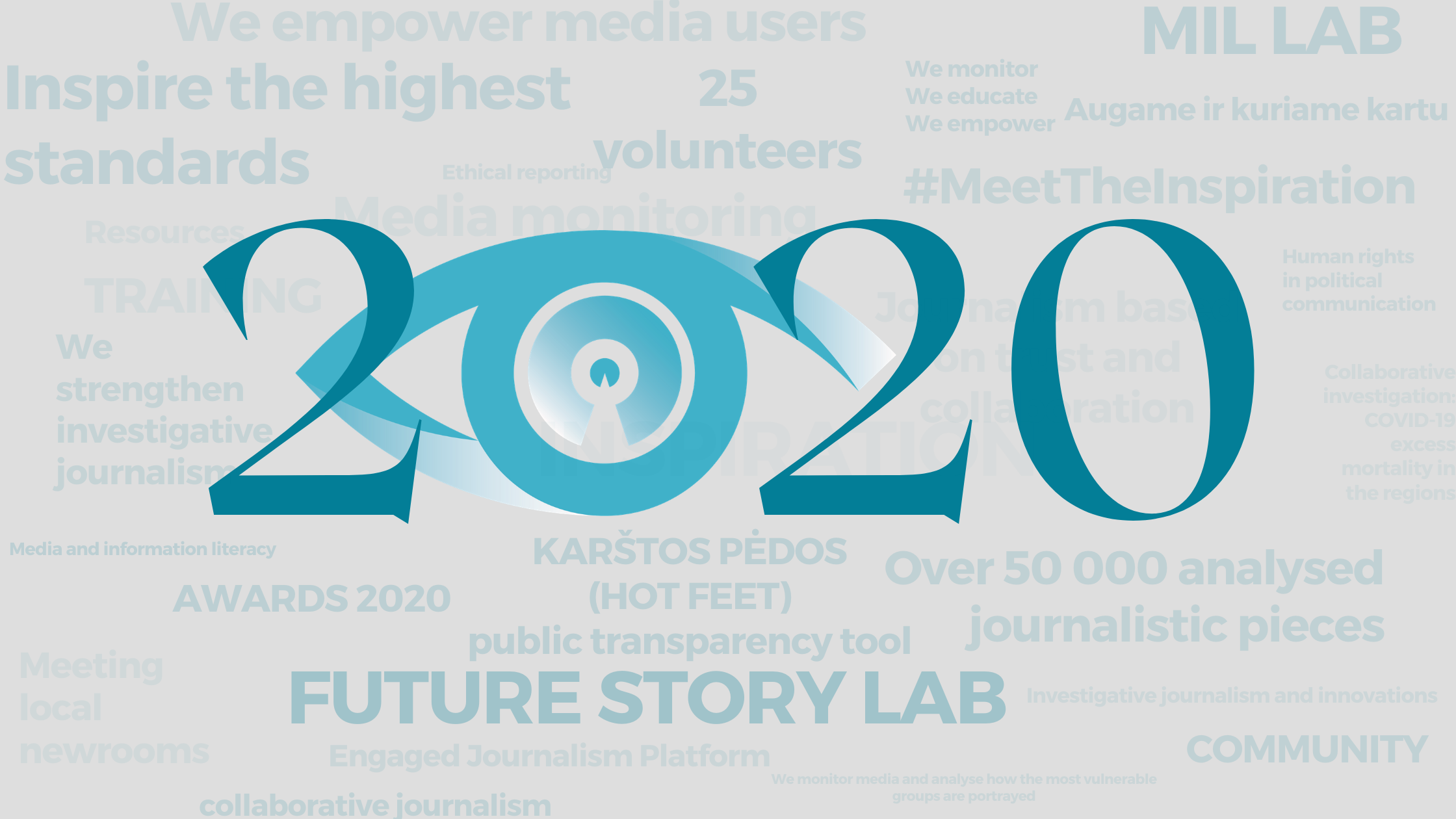The Media4change movement conducted media monitoring in January to monitor journalistic work on mental health, sexual orientation, migration, religion and national minorities. For the analysis, works were selected based on predefined keywords which discussed the above topics in the context of Lithuanian news.
The analysis carried out reveals how the media portrayed these groups, in what contexts they are shown, how public opinion is formed, how they are politically depicted, and what main perceptions of theirs are created.
MEDIA MONITORING: JANUARY 2020
The Media4change movement conducted media monitoring in January to monitor journalistic work on mental health, sexual orientation, migration, religion and national minorities. For the analysis, works were selected based on predefined keywords which discussed the above topics in the context of Lithuanian news. The analysis carried out reveals how the media portrayed these groups, in what contexts they are shown, how public opinion is formed, how they are politically depicted, and what main perceptions of theirs are created.
National and regional media were monitored during the study period. The research analyses publications on the basis of quantitative (subject and genre distribution) and qualitative (source comparison and headline analysis) criteria.
MIGRATION
315 publications on the topic of migration were discovered in the month of January. In 143 out of them migration was the main topic. The keyword “immigrants” was used the most often (in 195 stories), meanwhile “migrant” was used in 131 and “refugee” in 48 stories.
There were 29 copyrighted works on migration; most of them were publicized on the internet. 6 articles out of these were negative. The rest of the publications about migration were mostly neutral news reports from news agencies.
Migrants were cited in eleven out of 315 pieces (14 last month). In 10 out of these 11 cases the persons cited were economic migrants that had migrated to Lithuania, since there was a lot of discourse on their living and working conditions, as well as their impact on the economy. The remaining story focused on the experiences of refugees („Palangiškių širdis Turkijoje virpino karo sudarkyti žmonių likimai“, Palangos tiltas). As for the rest of the publications, experts were quoted the most, especially economists (53 publications).
Topics that were discussed the most: 29 publications on migrants’ impact on the economy, 25 on employment, 24 on Lithuanian migrants in foreign countries, 15 on rescuing migrants at sea, 10 on crossing the border; in 84 articles migrants were mentioned in other stories related to economy, mostly discussing income disparity and changes in demographics and prognoses about the future.
Migrants were mostly mentioned in a neutral context (262 out of 315 publications). The positive context was discovered in 24 publications (14 in December), and negative in 29 (24 in December). Articles demonizing migrants and encouraging obvious stereotypes against them and the migrant crisis in Europe can still be found („Pažįstu didvyrių. Jų daug“, Vienybė).
Negative articles on migrants from Eastern European countries could also be found and centered around discussions regarding the economic impact of migrant workers in Lithuania („Č. Iškauskas. Kuo gresia mūsų meilė imigrantams?“; „Jei nepaklusime, Briuselis nubaus“). It is worth mentioning that the balance between negative and positive pieces is a bit better because there are publications recognizing the benefits of migration.
There was no shortage of headlines inciting the reader against migrants:
„Didelė Ukrainos piliečių migracija į Lietuvą kelia pavojų“ (Large-scale migration of Ukrainian citizens to Lithuania poses a risk) (Vakaro žinios)
„Invazija“ (Invasion) (Vakaro žinios)
„Migrantų kontrabanda – pelningas verslas“ (Migrant smuggling is a profitable business) (Vakaro žinios, valstietis.lt)
MENTAL HEALTH
There were 104 publications on the topic of mental health in Lithuanian media in January. In 51 of them mental health was the main subject.
People with mental health disorders were quoted in 6 pieces in which they discussed the public stigma surrounding mental illness. This is an improvement compared to December when only two publications gave people with mental disorders a platform to speak out.
Mental health disorders and people who have them were mostly portrayed in a neutral context (94 out of 104 publications). There were 2 positive (33 in December) and 8 negative publications (13 in December).
Thematically most publications revolved around describing mental health disorders and their causes and symptoms. Experts discussed child psychology and mental disorders that can start in early childhood („Psichikos sutrikimai kūdikystėje ir ankstyvoje vaikystėje. Kas tai? (II)“). These articles were written so as to change the notion that mental illness is something that comes out of nowhere or is made up, as well as educate the reader on the topic of mental health („Filmas „Išgyventi vasarą“ – apie psichikos sveikatos problemas atvirai“). A significant number of publications are educational which adds to the destigmatisation of mental health.
SEXUAL ORIENTATION
260 publications about sexual orientation were found in Lithuanian media in January. 73 publications had sexual orientation as their main topic. “Homosexual” was the keyword that was used in most articles (129 articles). Gender reassignment remains the least discussed LGBT topic in media.
47 publications cited a person belonging to the LGBT community (13 transsexual or transgender people, 31 gays, 3 lesbians); in comparison, there were only 26 articles giving a platform to an LGBT person in December. This change is related to the case a homosexual couple won against Lithuania in the European Court of Human Rights (ECHR), as well as a transgender Lithuanian citizen being drafted into the military – the people in question were interviewed all over the media in both cases.
As a result of the former, the most discussed topic this month was the win in the ECHR (51 publications). Another prominent topic was health (36 stories, mostly related to sexual health). The LGBT community is often mentioned in the context of other political issues or entertainment topics.
Sexual orientation was mostly mentioned in a neutral context (173 out of 260 publications). Positive context prevailed in 57 publications (almost twice as much compared to December with 33 pieces), and there were also 30 negative articles (twice as little compared to December when there were 61 publications of the sort). This change can be explained by the historical win in the ECHR (for example, „Vytautas Mizaras. Dviejų vyrų bučiniai ir Lietuva: kodėl Lietuva pralaimėjo EŽTT“[1]). Meanwhile, publications of negative nature are usually related to publications of the commentary genre critiquing liberal values and more often than not spreading harmful stereotypes against the LGBT community („Stabdykime Lietuvos patriotų genocidą“, Karštas komentaras).
One article worth mentioning is an extremely emotionally connotated Lrytas.lt publication about a case of sexual violence; the language used is harmful to both homosexuals and people who have experienced sexual violence („Iškrypėliškos pramogos du kauniečius atvedė į teisiamųjų suolą“).
Some headlines worth mentioning are the following: one instigating negative stereotypes about lesbians („Lesbietė Syga atvirai: neturiu nieko prieš vyrus, bet nekenčiu patriarchato“[3] (Lesbian Syga: I don‘t have anything against men but I hate the patriarchate)), and the other referring to a transgender person incorrectly („Prabilo į kariuomenę šaukiamas vyras, kuris keičiasi lytį ir prisistato Zofija“ (Transitioning man introducing himself as Zofija speaks out about being drafted into the military).
MUSLIMS AND ISLAMISTS
452 publications relating to either Muslims or Islamists have been found in the month of January; 315 mentioning Muslim people and 164 mentioning Islamists. In 71 articles the main topic was either the Muslim community (49) or Islamists (28).
The term “Islamist” continues to be used exclusively for describing the actions of extremized military forces, with the exception of one article discussing the attack of Charlie Hebdo and portraying Muslims in a negative light („Pasaulis mini penktąsias ,,Charlie Hebdo“ teroro akto metines“).
Other topics worth mentioning are terrorist attacks (79), out of which only a part was about the Charlie Hebdo attack, the relationship between the East and the West (83), discrimination against Muslims in China and Myanmar (23), and political unrest in the Middle East (29).
In the context of Lithuania, the Muslim community was mentioned more often in January than December – 115 publications, out of which nine were solely about the community. Muslims were portrayed negatively in 10 publications, positively in 13, and neutrally in 91 publications. These numbers are comparatively better than last month’s numbers. The increase in positive articles is due to the fact that news portals took note of the Lithuanian Muslim tradition to clean out the Cathedral Square the day after the New Year’s Eve, and also gave a platform to the members of this community: five publications cited a Muslim or a representative of the Muslim community (for example, „Paskui susapnuotą trispalvę – į Panevėžį“, Sekundė).
Meanwhile negative publications were usually generalizing the community as something that is only capable of bringing evil into the world („G. Merkys. Latifundininko R. Karbauskio atžala kariuomenėje netarnaus, bet eilinį vaikinuką už vengimą jau nuteisė“).
ETHNIC MINORITIES
Poles
447 publications related to the Polish ethnic minority were found in January; in 166 of them Poles were the main subject of the publication.
Poles were mentioned in the context of such topics as Lithuanian politics (204), history (62), or Lithuania-Poland relations (54). This month was especially notable because of a claim by the President regarding the member of Electoral Action of Poles in Lithuania – Christian Families Alliance (EAPL–CFA) and the Minister of Transport and Communications Jaroslav Narkevič, in which he was accused of using his powers as a minister to employ people linked to his party; this statement sparked the subsequent accusations by the party that the President was discriminating Polish people.
15 publications cited a Polish person or a representative of the Polish community (6 in December), giving them a platform to comment on the current political situation between the Presidential Palace and EAPL–CFA, as well as while discussing Polish culture.
There were more articles that were positive or fighting against negative stereotypes than usual – 63 (34 in December); this can be explained by the aforementioned political situation, which has sparked publications in support of the Polish community. There were way less negative articles (17; 25 in December) and they were not related to the political situation, but were rather about the identity of Lithuanians or the shared history between the nations.
Russians
403 publications mentioning Russians were found in January. In 54 of them the Russian minority was the main subject.
Russians were mostly mentioned in the context of Lithuanian history (88) and Lithuanian politics (158). A large chunk of the articles on Lithuanian politics were related to an MP nominated by EAPL–CFA Irina Rozova, who is being investigated because of alleged ties with Russian diplomats, and to the subsequent considerations of impeachment. As for the historic context, the Russian minority was usually mentioned while discussing the events of January the 13th.
A Russian person or a representative of the Russian community was cited in 20 publications (4 in December), while discussing Russian culture and Orthodox Christmas Day.
Even though there were not a lot of publications that were spreading negative stereotypes against the Russians (12 out of 403), it is worth noting the reports on Lithuanian teacher A. G. Astrauskė’s detention during which she talked negatively about the policewomen who happened to be Russian. Even though media portals reported this incident neutrally, some news sites published all of her hate-filled speech about Russians („Trispalvės alėjoje sulaikyta mokytoja policijoje sukėlė tikrą skandalą: mane tampė rusė pareigūnė“).
Jews and Judaism
823 publications mentioning the Jewish ethnic minority were found in January; in 547 of them the Jewish community was the main subject. The increase in publications can be linked to the International Holocaust Remembrance Day which happens in January.
42 publications cited Jews or the representatives of the Jewish community (69 in December), mainly while discussing Holocaust and the Jewish culture and history in Lithuania. This change is due to the fact that discussions regarding Jewish assets and heritage that made up a lot of publications citing Jewish people in December were not as prominent this month.
Topics that were discussed the most in the media were the Jewish history in Lithuania (263 publications) and the Jewish history in the world (189). Most of the pieces were related to the International Holocaust Remembrance Day. Jewish people were also mentioned in the context of Lithuanian politics more often than usual. This is due to the President’s decision to visit Poland on the International Holocaust Remembrance Day as well as his visit to Plungė.
Most of the articles are neutral (693); and there are more positive articles than negative (108 positive, 22 negative). Compared to the month of December, the situation is considerably better (57 positive and 42 negative publications in December).
It is worth noting that there were twice as little negative publications about the Jewish community; this is because Jews were mostly discussed in the context of historic events such as the Holocaust, so the publications avoided any negative connotations. There were more people advocating for the memorialization of local Jews in regional papers than usual. This was supplemented by the President’s visit in Medsėdžiai where another tree in remembrance of Litvaks (Lithuanian Jews) was planted. But Lithuanian Jews were not the only ones that were remembered – a lot of newspapers and media portals published pieces on the international “We Remember” campaign; there were a lot of regional papers reporting on the local commemorations of the campaign and citing the representatives of local Jewish communities.
Meanwhile Judaism was only mentioned in some publications about 2020 being designated as the year of Vilna Gaon as well as film screenings about the Holocaust (18 publications in total).
However, with discussions regarding Lithuanians’ participation in the Holocaust being more prominent than ever, there are a few publications instigating hateful speech against the Jewish community and painting it as having done a worse crime against the Lithuanian nation („Tiesa (nieko nenutylint) apie lietuvių ir žydų santykius“, Lietuvos aidas; „Okupantai raudonieji žydai, po 1945 metų sunaikino okupuotoje Lietuvoje virš milijono lietuvių“).
There are also a few publications taking a stance for the Jewish community („Šūviai užgauliais žodžiais“, Šiaulių kraštas).
The Romani
100 publications mentioning Romani people in the Lithuanian media were found in January. In 6 of them the Romani community was the main subject. Keywords “Romani” and “Gypsy“ (Čigonas) were both used in 54 publications. This shows that “Gypsy“ (Čigonas) has yet to leave the vocabulary of Lithuanian media outlets.
The terms “Romani” and “Gypsy” (Čigonas) were being used interchangeably in seven publications. The one remaining publication that had both “Romani” and “Gypsy” (Čigonas) in it was discussing the usage of these terms.
Romani people were cited in 15 publications (in 7 of them they were referred to as Gypsies (Čigonai)). This is a positive increase compared to December when only one publication cited a person of Romani descent. More Romani people were given a platform because of a controversial book on Panevėžys Romani community that portrayed Romani people in a negative light. In addition to that, a representative of the Romani community was interviewed during the International Holocaust Remembrance Day.
The usual shortage of positive articles regarding the Romani community continued this month as well: 3 positive articles were found (for example, „Menininkė V.Fiokla Kiurė: „Maistas – kūrybiškos asmenybės bruožas“, Valstiečių laikraštis), 19 negative, and 78 neutral publications (meanwhile, there were 15 positive, 41 negative, 66 neutral publications in December). The decrease in negative publications could be linked to the fact that there were plenty of publications associating Romani people with stories of criminal nature (25 percent of all publications). Prevailing negative stereotypes continue to generalize Romani people as criminals and/or someone to be afraid of.
Media monitoring is part of the project “Inclusion members of ethnic minorities in Labour Market”. Funded by the European Social Fund.







